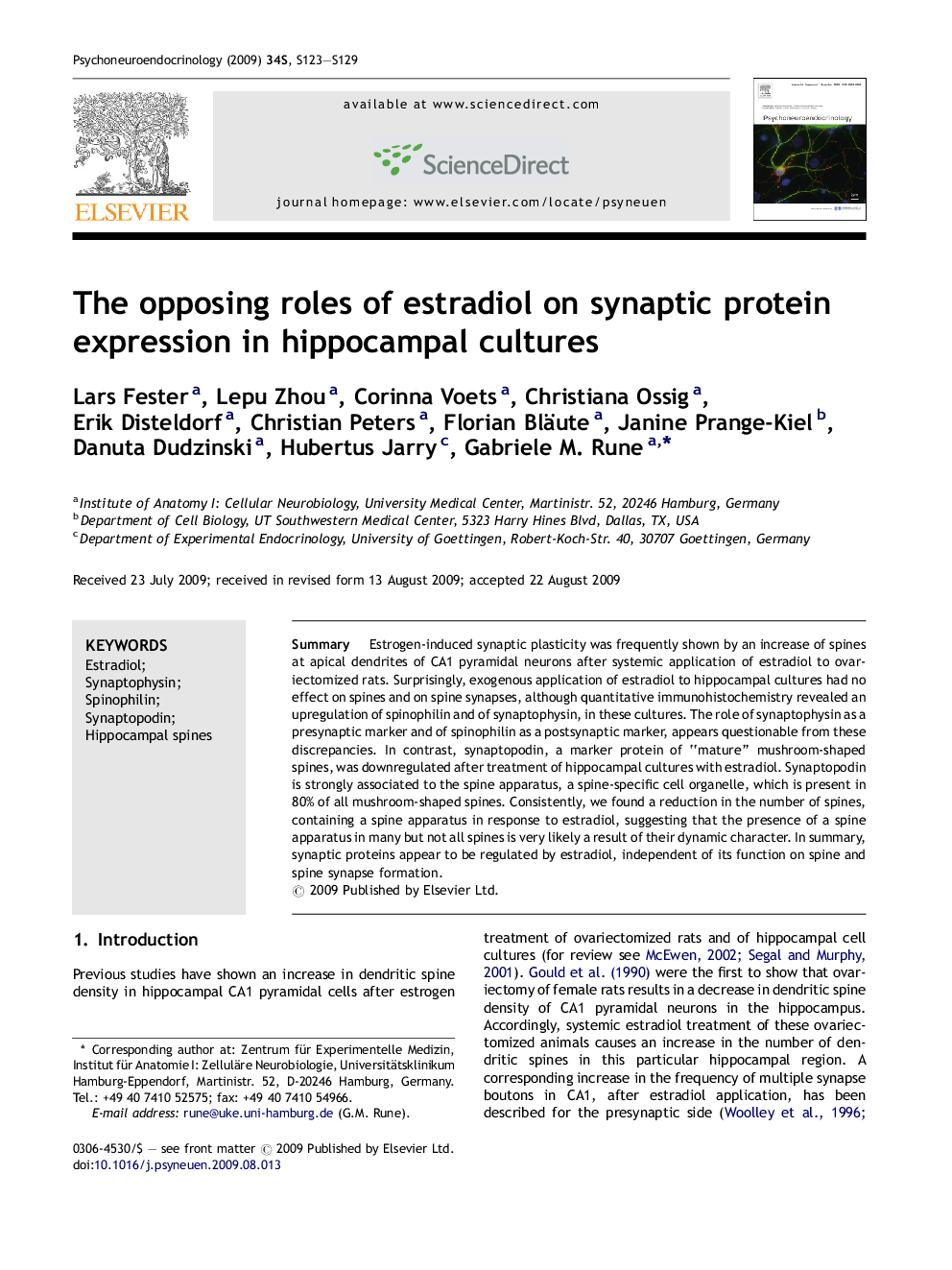| کد مقاله | کد نشریه | سال انتشار | مقاله انگلیسی | نسخه تمام متن |
|---|---|---|---|---|
| 336765 | 547208 | 2009 | 7 صفحه PDF | دانلود رایگان |

SummaryEstrogen-induced synaptic plasticity was frequently shown by an increase of spines at apical dendrites of CA1 pyramidal neurons after systemic application of estradiol to ovariectomized rats. Surprisingly, exogenous application of estradiol to hippocampal cultures had no effect on spines and on spine synapses, although quantitative immunohistochemistry revealed an upregulation of spinophilin and of synaptophysin, in these cultures. The role of synaptophysin as a presynaptic marker and of spinophilin as a postsynaptic marker, appears questionable from these discrepancies. In contrast, synaptopodin, a marker protein of “mature” mushroom-shaped spines, was downregulated after treatment of hippocampal cultures with estradiol. Synaptopodin is strongly associated to the spine apparatus, a spine-specific cell organelle, which is present in 80% of all mushroom-shaped spines. Consistently, we found a reduction in the number of spines, containing a spine apparatus in response to estradiol, suggesting that the presence of a spine apparatus in many but not all spines is very likely a result of their dynamic character. In summary, synaptic proteins appear to be regulated by estradiol, independent of its function on spine and spine synapse formation.
Journal: Psychoneuroendocrinology - Volume 34, Supplement 1, December 2009, Pages S123–S129